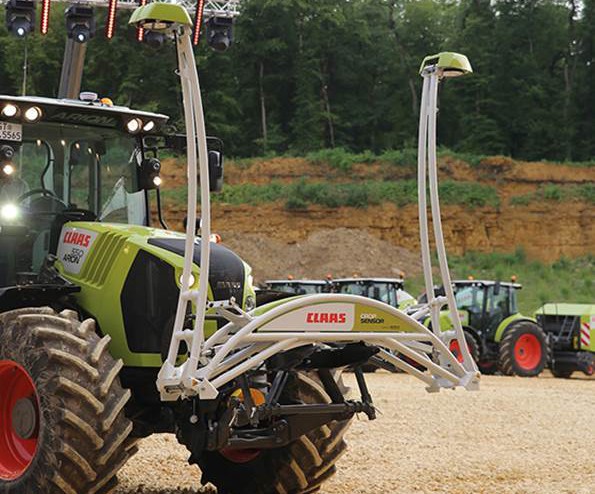
To provide a new industry-leading level of both mechanical, but more importantly agronomic support for the ISARIA CROP SENSOR, CLAAS UK has teamed up with agronomy specialists Agrovista UK to ensure that users receive an unprecedented level of support that is not matched by any other system.
The use of crop sensing technology to provide a real-time, area-specific calculation of a crop’s optimum nitrogen requirement, provides growers with the opportunity to easily and accurately ensure optimum nitrogen application rates across the field, thereby potentially boosting crop performance and a reduction in fertiliser use.
The agreement between CLAAS UK and Agrovista UK means that in addition to full mechanical support for the CROP SENSOR from CLAAS dealer EASY precision farming specialists, this is also backed-up by Agrovista’s full range of agronomic specialist knowledge and software including the latest MapIT Pro data management system, which is part of the cloud based real-time AXIS data hub.
The ISARIA CROP SENSOR is ISOBUS compatible, so enables both the sensor and the spreader to both be used with the same ISO-compatible control terminal. It is the first sensor to be awarded an AEF certificate for ISOBUS compatibility, which confirms its compatibility with current ISOBUS terminals, and will be listed on the AEF database so that users can check its compatibility with current or new technology.
The ISARIA CROP SENSOR is mounted on the front of the tractor, which has the advantage that it is further from the spreader, so more accurate. Also by measuring vertically at 80cm above the crop instead of at an angle, this again aids accuracy.
The two sensor heads incorporate four high-performance sensor LEDs that enable the CROP SENSOR to be used at day or night, plus an optical sensor and a distance sensor. These take a real-time measurement of the crop’s nitrogen requirement, which is then used to automatically alter the fertiliser spreading rate accordingly. Unlike other sensors, the ISARIA CROP SENSOR does not need to be manually calibrated on a regular basis or require any agronomic input, making it far easier to use.
Using biomass reflection as the measure for crop analysis, working over a 50cm diameter area, up to 800 measurements of the light reflected by the crop are taken every second. These measurements are then used to calculate the IRMI vegetation index, which reflects the current nitrogen supply to the crop.
The ISARIA CROP SENSOR measures the quantity of nitrogen which has already been absorbed by the crop up to that point in time, compares this measurement with the target value of the current growth stage and then calculates the missing nutrient difference which must be balanced. In addition, crop density is measured using the IBI biomass index. If the IBI falls below a particular threshold value, for example due to drought or frost damage, the spread rate in these subplots reverts to the value defined by the farmer.
With the ISARIA CROP SENSOR the best results come when making a ‘yield potential’ map for the field, this allows you to essentially create a map that tells the ISARIA CROPSENSOR whether it is operating in a high, medium, or low yield potential area so that it not only looks at the crop in isolation. In real terms this means that a thinner crop in a low yield potential area of the field will not receive as high a nitrogen rate as the same patch in a high yield area, which is a feature unique to the ISARIA CROP SENSOR.
The data produced by the sensor will automatically record all the input and biomass data from the crop which, using Agrovista’s MapIT Pro Advanced data manager will help build-up an overall ‘picture’ of the crop. In addition to allowing easy access to view both field and input data, the data can also be easily utilised to create both yield potential and also variable seed rate maps.
The Agrovista MapIT Pro software will allow the user to set up their own yield potential maps, either from field knowledge or by using other data layers such as soil conductivity data or yield maps. The collaboration between the two companies will ensure that Claas yield data can be seamlessly imported into the cloud based software to be easily accessed anywhere using a number of platforms.